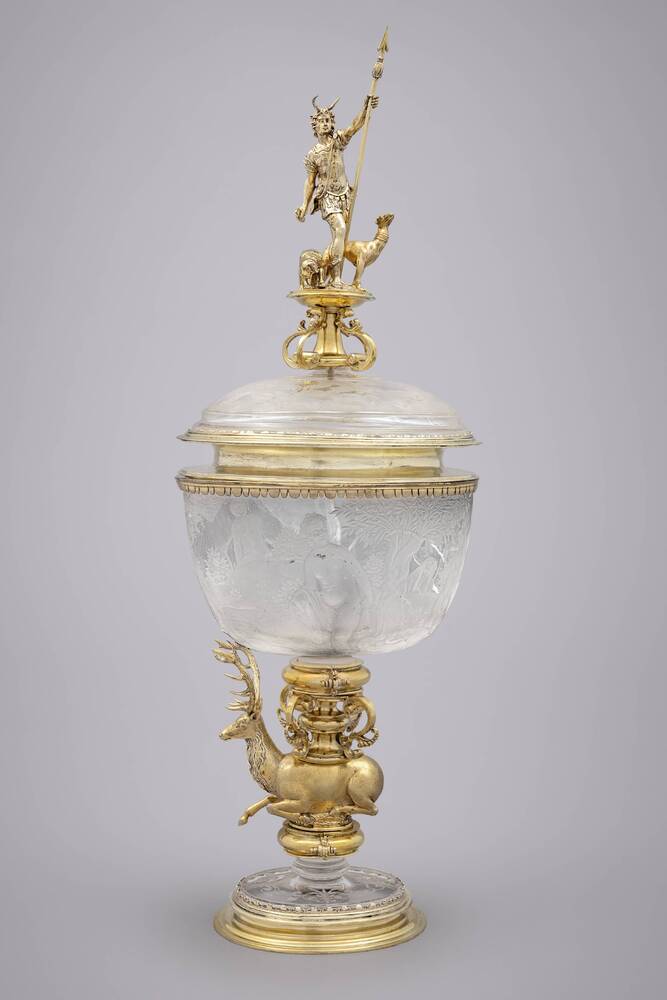Caspar Lehmann was the most celebrated glasscutter of the early seventeenth century. There are several of his works in this exhibition, including this covered goblet carved out of rock crystal depicting the goddess Diana bathing…and the glass panel showing Jupiter and Juno.
Lehmann came from Uelzen, near Hannover. In 1601, he was appointed gem-cutter to the German emperor Rudoph the Second, who resided in Prague. Then, for a while, he seems to have fallen from grace. In 1606 he turned up in Dresden, where the Elector gave him employment. He spent three years at the Saxon court, before returning to Prague. He might never have left Dresden but for the Elector‘s reluctance to pay his bills! Nevertheless, he returned in 1609 for a few months. After receiving his final payment – the handsome sum of 600 Thalers – he left Dresden again, this time on good terms with the Elector.
The glass panel depicting Jupiter and Juno is a very early example of glass-cutting and was done using bevelling equipment.
That impressive figure with a fistful of thunderbolts is, of course, the Father of the Gods, Jupiter. The female figure is his wife, Juno. The peacock is her symbol, just as the eagle represents Jupiter. The landscape at the lower edge of the panel is an impressive example of the glasscutter’s art. Lehmann has very effectively cut the shore-line into the glass, and left the surface of the water untouched. The design was based on a pen drawing by Bartholomäus Spranger, a well-respected artist of the time. Christian the First acquired the panel for his Kunstkammer in 1590.
The Diana goblet is an important example of Lehmann’s artistic achievement during the Dresden period. The cover, stem and foot are silver-gilt. The bowl – or cuppa, as it is called – is carved out of rock crystal. It shows the virgin goddess of the hunt bathing in the forest with her nymphs.
On the cover, you see the tragic figure of Actaeon with his hounds. He is still a human being here, but antlers are already sprouting from his head. The Roman poet Ovid tells us that Actaeon – caught sight of Diana while she was bathing. In fury, the goddess transformed him into a stag so that his dogs were no longer able to recognise him. As a result, they tore him to pieces. Lehmann’s engraving is superb.
The figure of the hapless Actaeon and the goblet’s stem, which has the form of a reclining stag, complete the pictorial programme. They are probably the work of the Dresden goldsmith Daniel Kellerthaler.
The Diana goblet was so popular that it was often lent out – until, eventually, it got broken. Yet even after it had been damaged, August the Strong included it in his collection of treasures – he was so charmed by its artistry.

